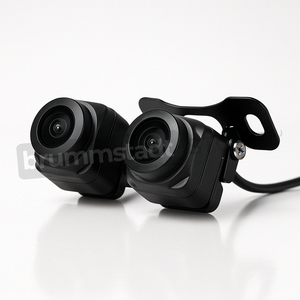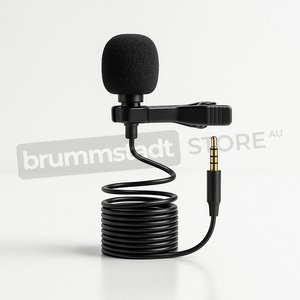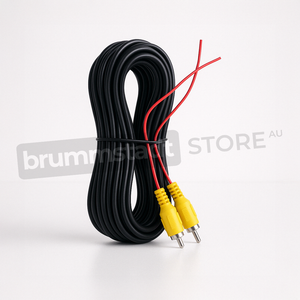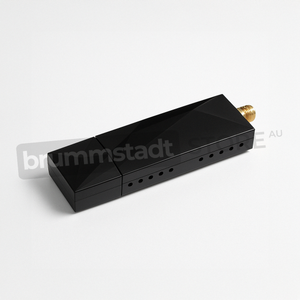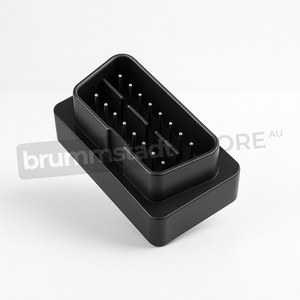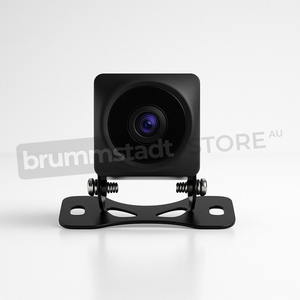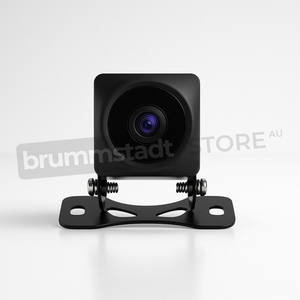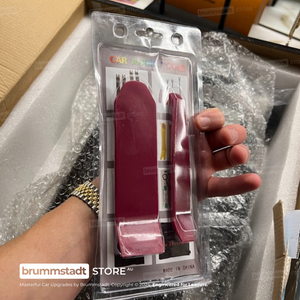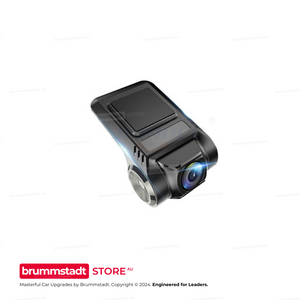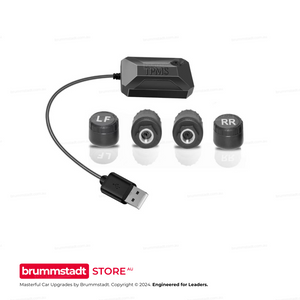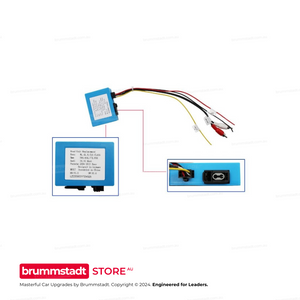Frequently Asked Questions
Everything you need to know about this head unit
Connect the single RCA cable with the yellow plug (included in your package) to extend your Bluetooth signal. This cable doubles as both a camera input AND a Bluetooth/WiFi antenna extension. The two small blue wires attached are antenna boosters that significantly improve connection stability. This simple connection takes 30 seconds and resolves 90% of Bluetooth issues. Make sure it's firmly connected even if you're not using a rear camera.
Try these proven solutions:
1. Quick Fix: Settings → Apps → Z-Link → Disable → Enable → Open (repeat each use)
2. Check Cables: Use the data/charge USB cable (not charge-only)
3. Bluetooth Setting: Disconnect all other Bluetooth connections - CarPlay needs exclusive access
4. Factory Reset Z-Link: Find the pink 'RESET' app, restart, reconnect Bluetooth, then try Z-Link
5. Sound Issues: Switch audio source to 'AUX' or 'USB/AUX' in your vehicle menu
Most issues are resolved with step 1 or 3!
The processor differs between models: The 2/32GB has a 4-Core processor, while 4/64GB and 8/128GB models feature the powerful 8-Core Cortex-A55 processor. Combined with RAM differences: The 2/32GB model with its 4-Core processor and limited RAM may experience slowdowns with heavy multitasking. The 4/64GB with 8-Core provides smooth performance for most users - no lag, seamless app switching, and enough storage for maps and music. The 8/128GB with 8-Core offers maximum performance with its generous RAM allowing unlimited multitasking and massive storage for extensive media libraries. Think of RAM like your desk space - more RAM means you can have more apps open simultaneously without slowing down.
Absolutely normal! These head units are complete replacement systems with their own GPS antenna, microphone, and Bluetooth module. Your factory connectors for these features won't be needed anymore. The important connections are: main power harness, speaker outputs, and the yellow RCA cable (even if not using a camera - it extends Bluetooth range). Any leftover factory plugs can be safely tucked away. If you're unsure about any connection, our support team is here 7 days a week.
Z-Link updates are handled through system firmware updates. Go to Settings → System → System Update. If an update is available, download it to a USB drive (FAT32 format) and install. Important: Never download Z-Link APKs from unofficial sources - they won't work and may cause issues. If you're having compatibility issues with newer iOS versions, the disable/enable workaround (Settings → Apps → Z-Link) usually resolves them while waiting for official updates.
Consider your usage:
• 2/32GB (4-Core): Budget option - fine for basic use, but may lag with multiple apps due to 4-Core processor and limited RAM
• 4/64GB (8-Core): Sweet spot - smooth Android Auto/CarPlay, multitasking, and ample storage
• 8/128GB (8-Core): Premium choice - unlimited multitasking, massive storage, future-proof for years
Most customers choose 4/64GB for the perfect balance of performance and value. The extra RAM makes a huge difference in daily smoothness!
The yellow RCA cable's blue antenna wires also boost WiFi signal! Make sure this cable is connected. Additionally, try these tips: Position the blue antenna wires away from metal surfaces, check that your phone's hotspot is set to 2.4GHz (not 5GHz) for better range, and ensure the head unit's WiFi sleep policy is set to 'Never' in Settings → WiFi → Advanced. For best performance with wireless CarPlay, keep your phone within 1-2 meters of the head unit.
Go to Settings → Sound → Equalizer and adjust to your preference. For more volume, increase the 'Loudness' setting. The 4/64GB and 8/128GB models have superior audio chips that provide cleaner, louder sound. If you have an amplifier, use the RCA outputs for best quality. Also check Settings → Factory Settings (password usually 126) → Audio settings for additional gain controls. Remember: higher-spec models (4GB+) include premium audio components for noticeably better sound.
Yes! Most vehicles work instantly. If not, use the steering wheel learning app: tap the steering wheel icon, press each button on your wheel, and assign functions. For newer vehicles with CANbus, we provide CANbus modules for automatic setup. Some vehicles may need the Key1/Key2 wires connected (usually included in our harness). If you're having trouble, let us know your exact vehicle model and we'll provide specific instructions.
We offer a 30-day return policy. If it doesn't fit or there's a compatibility issue, we'll work with you to resolve it. If you change your mind, a 20% restocking fee applies. Our team verifies compatibility before shipping to minimize issues. We provide installation support 7 days a week to help resolve any problems. With our 3-year warranty and Australian-based support, you can purchase with confidence. Full details in our Refund Policy.
Evolutionary History of the Hyundai Tucson:
First Generation (2004–2009):
The Tucson nameplate was introduced in 2004 as Hyundai's compact SUV contender. Designed as a practical urban crossover, this original model embraced a rounded, contemporary styling language suitable for both families and younger drivers. Its international success hinged on efficient packaging, comfortable interiors, reasonable pricing, and attention to reliability. Favorable reviews came from its strong value proposition, ease of maneuvering, and soft, smooth ride quality. Notably dependable and user-friendly, the first Tucson laid a solid foundation for ongoing development.
Second Generation and Hyundai ix35 (2010–2015):
Hyundai took bold steps forward with its second-generation Tucson model. Between 2010 and 2015, it wore the Hyundai ix35 badge mainly within Europe, Asia, Australia, and elsewhere, while North American and other select global markets retained the Tucson name. Featuring fluidic design philosophies characterized by pronounced curves, angular lines, and sculpted surfaces, the second-gen Tucson marked significant progress architecturally and stylistically. Buyers enjoyed upgraded interiors, increased cargo space, exceptional practicality, improved fuel economy, and more dynamic driving experiences compared to the earlier version.
Third Generation Hyundai Tucson (2016-2020):
Positioned as the continuation and enhancement of Hyundai's compact SUV vision, the third-generation Tucson (internationally standardized under the Tucson name) launched globally in 2015-2016 to notable acclaim. Noticeably mature in its design approach, this era marked a significant refinement of Hyundai's styling direction, accentuating elegant lines, purposeful body elements, tasteful chrome accents, and distinctive LED lighting treatments. Inside, enhanced seating comfort, improved cabin ergonomics, well-chosen materials, and increased sound insulation underscored a leap forward in quality. Hyundai's streamlined introduction of advanced convenience technologies—including intuitive infotainment packages, color displays, and effective climate control systems—complimented efficient and responsive powertrains that catered effortlessly to a wide array of driving conditions.
Advantages and Reasons Behind Popularity (2012-2018):
Drivers gravitated toward the Tucson for practical reasons: reliability, ease of ownership, fuel economy, spacious and comfortable interior arrangements, and commendable cargo-carrying versatility. Its success has particularly come from the vehicle's ability to deliver balanced driving dynamics with composed ride comfort, confidence-inspiring handling, and stability—even under varied driving scenarios ranging from city commuting to interstate highway travel. Internationally recognized safety ratings, thoughtful cabin layout, easily accessible controls, and functional infotainment further contributed substantially to owner satisfaction and longstanding affection.
Integrating Modern Infotainment Technology:
While factory-standard infotainment systems of the Tucson era provided reasonable functionality, contemporary owners frequently search out solutions to refresh capabilities to modern standards—particularly smartphone integration, navigation, and enhanced entertainment possibilities. Among well-suited aftermarket solutions is Brummstadt’s compatible premium head unit, crafted specifically as a cohesive solution for seamless integration within the 2012-2018 Hyundai Tucson dashboard space. Purpose-built to match the Tucson's interior design language and dashboard ergonomics, this unit ensures compatibility without sacrificing factory aesthetics.
This advanced device introduces sophisticated connectivity through comprehensive support for wired and wireless Apple CarPlay and Android Auto, providing instant, easy access to favored smartphone features directly on its high-resolution touchscreen display. Drivers effortlessly utilize individual preferences for navigation, music streaming, messaging, or podcasts through native app compatibility such as Google Maps, WAZE, Apple Maps, Spotify, and more. Imagine concluding a pleasant dinner with family, with the route to a friend’s home set comfortably via mobile phone navigation. Upon entering the Tucson, the previously adjusted navigation route transfers automatically to the head unit through wireless phone connectivity, transforming an ordinary trip into a pleasant and effortless transit experience free of stress and confusion.
The premium head unit also offers a significant additional safety augmentation—a high-quality 1080p HD front and rear camera combination to assist with parking maneuvers, traffic monitoring, and added security through built-in recording functionalities. Ensuring visual clarity and incident documentation improves driver confidence, substantially bolstering peace of mind.
Moreover, this system broadens conventional entertainment experiences during extended trips. Passengers discover a novel way to engage during travel breakpoints as gaming controllers are seamlessly connected via built-in USB ports. Multigenerational car travel turns mundane voyages into shared memorable experiences, creating lasting memories through enjoyable in-vehicle interactions.
Integrated smart-voice control functionality adds another distinct dimension of convenience by providing effective and intuitive interactions through familiar assistants, such as Siri or Google Assistant. Drivers readily adjust navigation routes, select preferred media content, or compose messages hands-free. Remarkably, further integration allows even pre-configured connections to compatible smart home devices, crafting a smooth transition from travel to arrival. With straightforward commands ("Hey Siri, turn on the front porch lights"), this organic integration translates into substantial gains of practicality, convenience, and everyday usefulness, both on road journeys and daily tasks.
Benefits & Driving Experiences:
Vehicles within the Hyundai Tucson series from 2012 to 2018 have steadily excelled in balancing practicality, affordability, refinement, and driver satisfaction. Much of its continued popularity comes from these intrinsic advantages shared across its second- and third-generation releases. Smooth, casually comfortable ride quality and effectively managed road noise are consistent benefits, while responsive handling characteristics make urban driving enjoyable and predictable. Upgrading traditional infotainment systems and adding contemporary connectivity through carefully-selected components—such as Brummstadt’s tailored infotainment unit—considerably increases convenience, entertainment value, practicality, and safety significance of these already popular vehicles. Enhanced infotainment transforms everyday commutes and longer journeys, undeniably improving overall satisfaction by responding effectively to occupants' modern connectivity expectations and lifestyle needs.
Viewed comprehensively, the 2012-2018 Hyundai Tucson exemplifies a thoughtfully matured automotive concept—combining consistent functional evolution with driving-focussed practicality, genuine reliability, and refined comfort. Supported and further developed by considered technological integrations and carefully selected aftermarket accessories, this iteration notably assures continued enjoyment and meaningful driving experiences for years ahead.


















